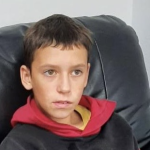The connection between craniosacral therapy and stem cell transplantation in the treatment of autism
Craniotherapy and osteopathy for autism are two related methods, so it is not surprising that they are confused from time to time. The difference is that the first one focuses on normalising the connection between the brain and the bone structure of the skull, while the second establishes a connection between the brain and the autonomic nervous system.
Features of craniotherapy for autism
Many experts believe that nervous excitement negatively affects the pathogenesis of the disease. Every person with autism spectrum disorder strives for self-realization in one way or another. Craniosacral therapy can become the trigger that will calm the autonomic system and help the patient settle into this world and be social and confident. If the nervous system is relaxed, all functions of the brain come into harmony and normalise, and recreational resources that were previously blocked by the need to cope with stress are revealed.
ASD is a stress disorder to some extent
The fact is that the brain of an autistic child is not able to adequately cope with the stress coming from the world around it. Stress negatively affects digestion and other metabolic processes in the body, and the sympathetic nervous system is also overloaded.
Therefore, an autistic child is constantly worried and anxious; their pulse is abnormal; there may be a circulatory disorder, which leads to brain hyperstimulation, inability to concentrate, insomnia, apathy, aggression, etc.
Craniosacral therapy affects the parasympathetic nervous system and has a calming effect on the autonomic and sympathetic systems.
Practical use of craniosacral therapy
The specialist focuses specifically on the parasympathetic system, and the patient becomes completely relaxed and tranquil. An individually selected set of methods directly impacts the patient’s brain in the most calming way possible. The first results become noticeable after just a few sessions.
In many clinical cases, craniotherapeutic treatment of autism spectrum disorder is quite effective. It is especially effective in combination with other procedures. But, unfortunately, it is impossible to achieve a pronounced effect even with a complex of methods for autism treatment.
Stem therapy at the Mardaleishvili Medical Centre is the best way to treat ASD with a long-term effect that is superior to the results of other procedures.
All over the world, transplantation of one’s own stem cells is being actively used to correct childhood autism. And such minimally invasive intervention allows not only to eliminate to a certain extent the manifestations of pathology but also to partially cure the disease, which no single classical method can do.
Strengths of autism treatment with stem therapy in Georgia:
- The real effect of treatment, not just the fight against symptoms
- Affordable services compared to offers from other clinics in the world
- High-quality therapeutic effects and assistance in organisational matters
Use craniosacral therapy for autism for rehabilitation purposes; undergo an effective stem cell transplant first, and your child’s health will be restored to the maximum!
Autism Treatment Center Videos
Autism treatment with own stem cells
Cord blood association congress
International Quality Crown
Autism Treatment Reviews
Autism treatment with own stem cells
The story of Alessandro (6 years old)
Autism Patient Testimonial - Stem Cell Treatment
Clients Testimonials

Feedback from Igor, David’s father (12 years old) Read More

Feedback from Olga, Fedya’s mother Read More

Feedback from Natalia, Radomir’s mother (15 years old) Read More

Feedback from Esther, Samuel’s mother (8 years old) Read More

Feedback from Abibe, Selim’s mother (7 years old) Read More













